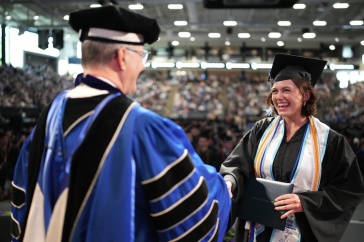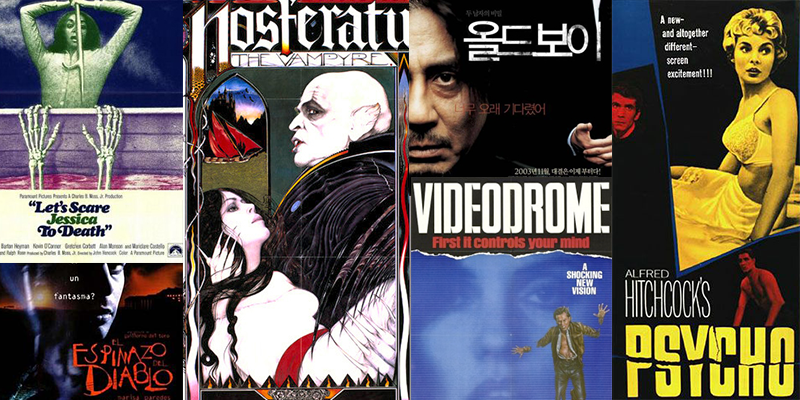
Horror films are explorations of the unspoken—exhibitions of our deepest fears that test boundaries between ethics and survival, morality and serenity, and that make us choose between the known or the unknown of what’s beyond the forest’s edge or deep in the labyrinth. We asked cinema and psychology faculty to share their favorite horror films.
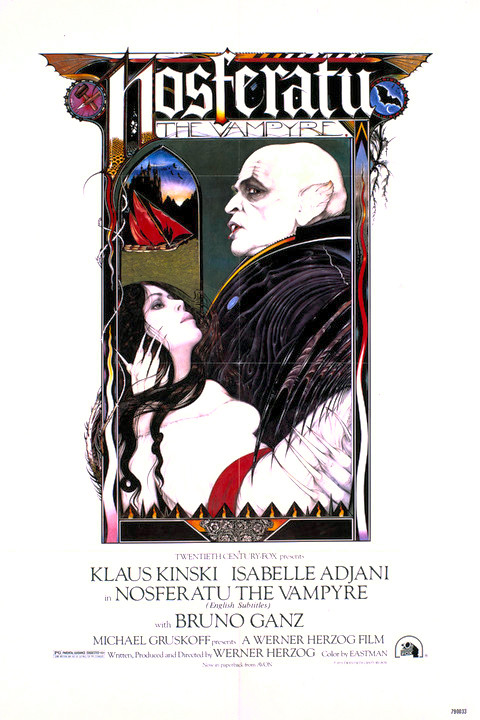 Faculty: Jaume Marti-Olivella
Faculty: Jaume Marti-Olivella
Campus: Durham
Department: Languages, Literatures, and Cultures; European Cultural Studies
Professor Jaume Marti-Olivella names Werner Herzog’s 1979 film “Nosferatu the Vampyre” a top horror film with a mesmerizing portrayal of the iconic vampire in this remake of the 1922 classic “Nosferatu.” After seeing it back home in Spain after its release, Olivella found Klaus Kinski’s performance as Count Dracula captivating.
Faculty: Barbara Jago
Campus: Manchester
Department: Social Science; Communication Arts
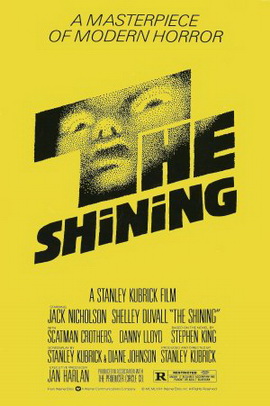
Faculty: Michael Mangan
Campus: Durham
Department: Psychology
Faculty: William Stine
Campus: Durham
Department: Psychology
Stanley Kubrick’s “The Shining” (1980), is as an absolute favorite of three faculty:
It’s not a film of jump scares says Barbara Jago, “It is a smart horror film that keeps viewers on their toes.” Professor Michael Mangan is fond of the film as well, saying, “It’s just so darn creepy, disturbing and even somewhat darkly humorous. Jack Nicholson is one of my favorite actors too — he’s very funny/creepy (freepy?).” Mangan is unsettled by the psychological thriller elements of the film: “One of the top things that I found disturbing (and memorable) is when Jack began to lose his mind by way of that sinister, evil force in the hotel.” Professor William Stine, who viewed the film in 1980 shortly after its release, notes, “Kubrick’s direction is astonishing.”
 Faculty: Matthias Konzett
Faculty: Matthias Konzett
Campus: Durham
Department: English
Voted on CNN to be one of the best Asian films ever made, “Oldboy,” (2003) directed by Park Chan-wook, is “not a formulaic horror film but an existential revenge thriller about wrong imprisonment and many unexpected twists and turns,” says professor Matthias Konzett. A long take in which the protagonist fights his way through a herd of his former captors with a hammer is a stand-out scene for Konzett, who names Jack Torrance (“The Shining”) and (“Candyman”) his favorite horror characters of all time.
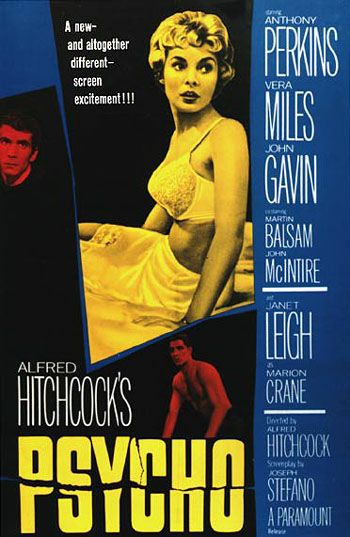 Faculty: Anthony Tenczar
Faculty: Anthony Tenczar
Campus: Manchester
Department: Social Science; Communication Arts
Alfred Hitchcock is known for psychological thrillers, especially “Psycho” (1960), which professor Anthony Tenczar calls “a cinematic masterpiece.” Tenczar says, “Few directors can manipulate the viewer’s emotions like Hitchcock. The film’s shower montage is an astonishing moment in cinema.” Hitchcock’s manipulation of the viewer’s emotions and the iconic shower scene make “Psycho” stand out, and as Tenczar claims, “Once you see the film you will never forget it, and it might be a while before you take a shower in a motel.”
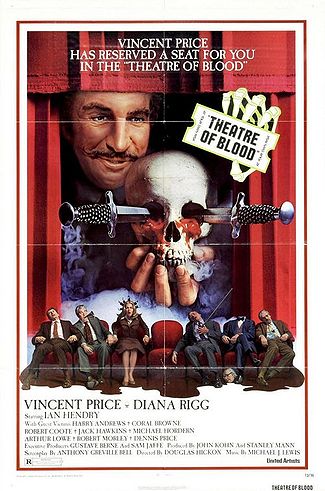 Faculty: Douglas Lanier
Faculty: Douglas Lanier
Campus: Durham
Department: English; Center for Study Abroad
For those more theatrical at heart, professor Douglas Lanier suggests Douglas Hickox’s 1973 film “Theatre of Blood.” After seeing the film in a theatre in Florida as an undergrad, Lanier reports he was struck by “its blend of horror, humor and Shakespeare” and notes that lead actor Vincent Price named “Theatre of Blood” a favorite of his own films as well. Lanier also names Shaun of the comedic zombie flick “Shaun of the Dead” as his favorite horror character of all time, proving that comedy and horror don’t always belong as strangers.
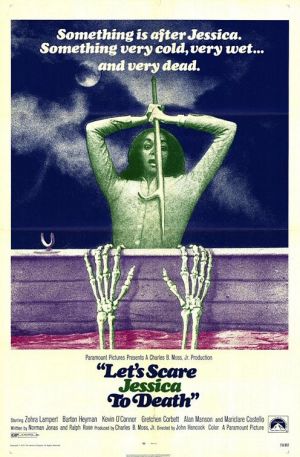 Faculty: Mark Henn
Faculty: Mark Henn
Campus: Durham
Department: Psychology
Professor Mark Henn names John D. Hancock’s 1971 film “Let’s Scare Jessica to Death” as a favorite: “It was, in my opinion, much scarier than the original ‘Halloween’(which I had seen, earlier, in the theatre in 1978 or ‘79). I loved the subtle story — are the horrible things Jessica is seeing real, or of her own imagination?” Henn details, “The scene in her room with the gravestone rubbings was horrifying.” Henn, who saw the film in the 1980s on late-night television, explained,“We begged the security guard to let us stay until the end; he made his rounds, then watched the rest of the movie with us.”
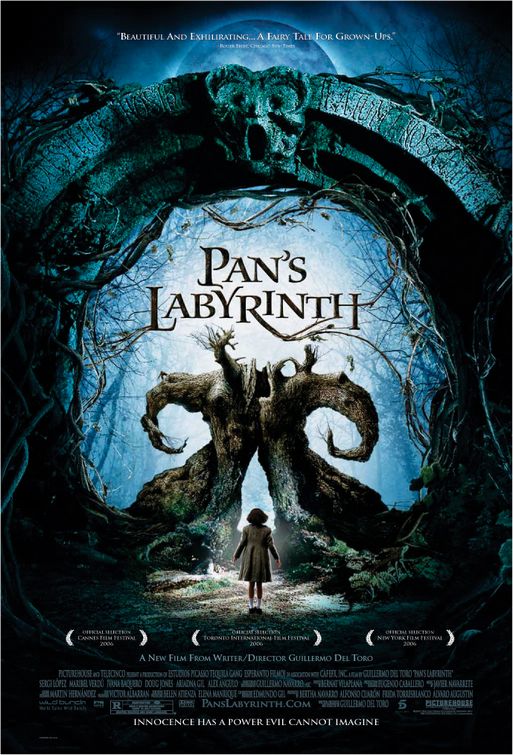
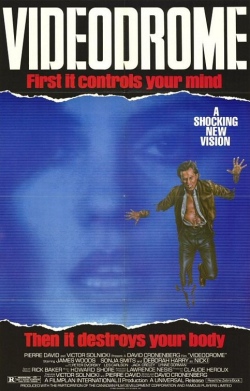 Faculty: Lori Hopkins
Faculty: Lori Hopkins
Campus: Durham
Department: Languages, Literatures, and Cultures; Women’s Studies
Director Guillermo del Toro is of particular interest to professor Lori Hopkins who names his films “Cronos” (1993), “The Devil’s Backbone” (2001), and “Pan’s Labyrinth” (2006) as favorites. “Del Toro considers horror films to be either warnings against crossing the boundaries … or liberating visions of fantasy/horror, when one dares to cross over the spaces that lead to unknown and possible pathways to liberation and rebellion. He chooses the latter.” Hopkins elaborates, “These are not films of warning and dread, but ones that make us face our fears and see … what is on the other side.” Hopkins also suggests director David Cronenberg’s 1983 film “Videodrome” which she says, “push[es] the limits of science, sexuality and humanity.”
Films for the Spooky Season
as recommended by UNH faculty
The Shining (Stanley Kubrick; 1980)
Psycho (Alfred Hitchcock; 1960)
Oldboy (Park Chan--wood; 2003)
Let’s Scare Jessica to Death (John D. Hancock; 1971)
Videodrome (David Cronenberg; 1983)
Pan’s Labyrinth (Guillermo del Toro; 2006)
Cronos (Guillermo del Toro; 1993)
Nosferatu the Vampyre (Werner Herzog; 1979)
The Devil’s Backbone (Guillermo del Toro; 2001)
Theatre of Blood (Douglas Hickox; 1973)
-
Written By:
Elizabeth Fiske '18 | Communications and Public Affairs | epf2002@wildcats.unh.edu
















































